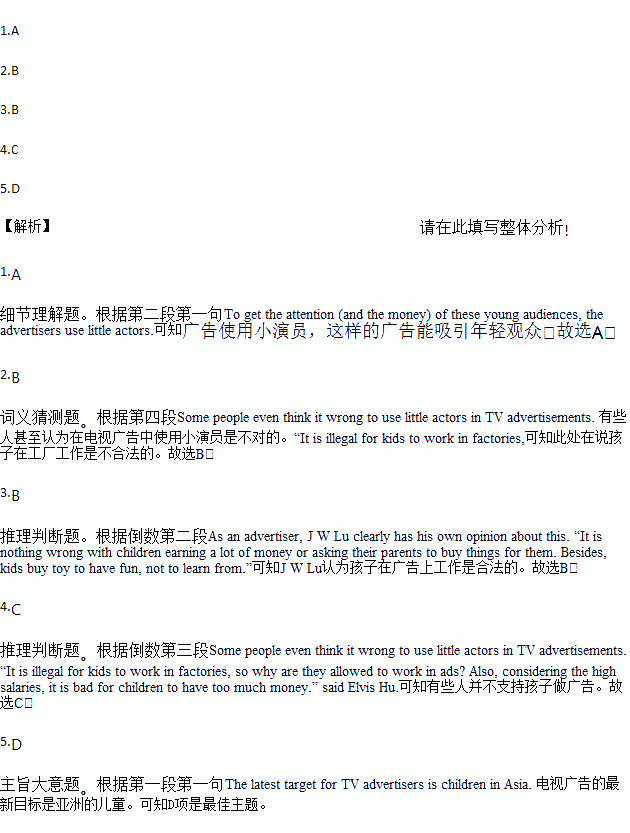题目内容
The latest target for TV advertisers is children in Asia. Asian families are getting smaller and wealthier, and Asian children are watching more and more TV. It is said that the average Hong Kong child sees about 25,000 TV advertisements a year.
To get the attention (and the money) of these young audiences, the advertisers use little actors. “The kids share the same feelings with someone from their own age group,” says one advertiser, “so this kind of advertisement is more effective. And, of course, the little actors earn big money.”
Not everyone is happy to see kids turned into buyers. “Advertising to children is wrong,” said Pasty Liang, “because its aim is to make them ask their parents for money to buy things. Also, many things advertised, such as toys, are silly and encourage violence. If a child buys them, he or she will learn nothing.” Some educators believe that if young people watch the ads, they will become more and more materialistic.
Some people even think it wrong to use little actors in TV advertisements. “It is illegal for kids to work in factories, so why are they allowed to work in ads? Also, considering the high salaries, it is bad for children to have too much money.” said Elvis Hu.
As an advertiser, J W Lu clearly has his own opinion about this. “It is nothing wrong with children earning a lot of money or asking their parents to buy things for them. Besides, kids buy toy to have fun, not to learn from.”
Anyway, governments are beginning to take action to protect children. An ad would not be allowed to appear on TV if it made children feel inferior (低人一等的) because they didn’t own the advertised product.
1.The advertisers use little actors so that ________.
A. the ads can attract young audiences
B. the little actors can earn big money
C. the kids will share the same feelings
D. people will see more TV advertisements
2.What does the underlined word “illegal” mean?
A. Not liked by the children.
B. Not allowed by the law.
C. Not accepted by the public.
D. Not agreed to by the parents.
3.Who thinks it all right for kids to earn money by acting in ads?
A. Elvis Hu. B. J W Lu.
C. Pasty Liang. D. Some educators.
4.Which of the following is true according to the passage?
A. Little actors earn less money than adults.
B. Advertisers want children to learn from toys.
C. Some people are not for advertising to children.
D. Governments are taking action to protect advertisers.
5.What is the best title for the passage?
A. Little Actors or Adult Actors
B. How to Get Children’s Attention
C. Opinions about TV Advertisements
D. Children: New Target for TV Advertisements

